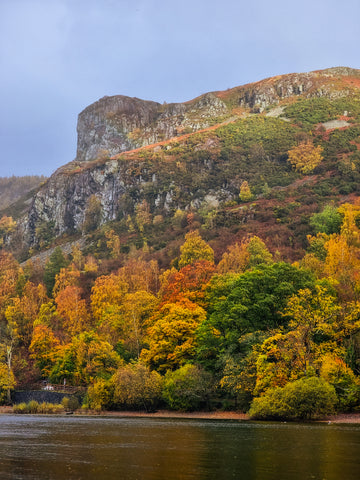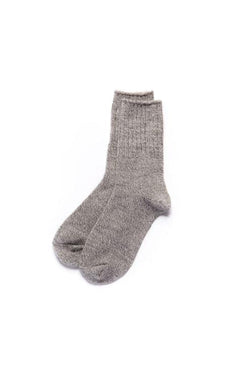Autumn is a truly magical time of the year to be outdoors; with the changing colours of the leaves and golden, crunchy carpets covering the ground it’s hard to not feel like you’re in a movie scene at times. Added to that are more comfortable walking temperatures, less humidity, less attacks from those nasty biting flies and quieter trails. However, with the changing season also comes a time for adapting how we approach and plan our time in the outdoors.

5 Top tips to keep you safe in the outdoors over Autumn;
1. Reading a mountain weather forecast
The weather over autumn can fluctuate drastically and it doesn’t really remain consistent for any period of time. Daily changes can happen in minutes and you can easily experience one extreme to another in just one Autumn day.
Checking the correct weather forecasts
If you’re heading outdoors it’s sometimes not enough just to check the weather for the local area you’re heading to; especially if you have planned a day in the moors, hills or mountains. Checking the forecast for the specific mountain or mountain range is a fundamental basic that many people skip over.
My favourite and most reliable weather forecasts for hills and mountains I’ve found and use are the MetOffice Mountain Forecast service where you can view reports for hilly regions as well as specific mountains, Mountain Weather Information Service (MWIS) and Mountain Forecast.
When you search for a specific mountain you might see something like this;

Top tips for reading the mountain weather forecast:
- Check the general weather for rain/snow/sun but look at the other aspects of the weather too
- The feels like temperature is an important one for packing appropriate clothes because it takes into account other factors so is more accurate. Temperatures in the mountains drop by around 1 degree for every 100m you gain.
- Wind speed and direction.
The general rule for wind speed is anything above 30mph gusts can affect your balance and above 50 mph will seriously affect how easy it is to walk
- Visibility - if thick cloud or fog comes in over the hills or mountains it can make navigating extremely challenging
- Don’t just check one weather forecast - check multiple so you have a better idea of what the experts are expecting.
2. Clothing and footwear
Clothing is SO important during Autumn mainly due to the changing temperatures during the day; you could venture out on a clear, mild sunny morning but by early afternoon it’s hailing and the temperatures have dropped drastically. I like to take extra clothes, socks and gloves in my bag too just to be on the safe side.
Clothing
- Layers - lots of thin layers that you can take off or put on when required is a great way of staying warm.
- Midlayers - a fleece like this Rambler zip through fleece or a softshell jacket will keep you warm and repel the wind.
- Outerlayer - A waterproof like the Wanderlust waterproof jacket is a must for Autumn hiking or consider a Gore-text shell if the weather is particularly wet and wild!
- Legwear - Walking trousers or leggings like the Trailblazers will often suit Autumn walks and don’t forget to pack a pair of pullover waterproof trousers too.
- Accessories like a hat, buff and gloves will keep you warm when the temperature drops.
Footwear
Even if you know a route well, the terrain during Autumn can change and routes can become slippery. A good quality waterproof and durable pair of hiking boots rather than trail shoes/trainers will see you safely through the season. Choosing a suitable pair of hiking boots can be overwhelming so I’d always recommend going into a specialist shop such as Ellis Brigham to talk to their experts and try on a whole range to find something suitable for you.
Things to consider when choosing hiking boots
- A Gore-Tex waterproof lining will ensure your feet stay dry even when squelching through puddles and across wet ground
- Leather boots will be more durable but you may find them heavier
- Check grip and ankle support - this will be a saviour for those wet and muddy trails
3. Staying hydrated and fuelled
It can be easy to think that since the temperature is cooler you won’t need to drink as much but staying hydrated is vital even in colder weather. Dehydration can lead to headaches, dizziness and fatigue (not ideal if you in the great outdoors or on a mountain) and sometimes it can be hard to notice how much we are still sweating during the colder months so it’s important to keep on top of your hydration.
- The general guidance is to drink 1 litre every couple of hours and sip regularly
- Consider taking a warm drink with you in a flask too - this will feel like heaven on a cold day
Hiking can burn around 300 calories per hour depending on many variables so staying fuelled will ensure you have enough energy for a day in the hills. I love to take a mixture of nuts, sweet treats dried fruit and cereal bars but my favourite accessory for Autumn hikes is this Thermos Food Flask - believe me, there’s nothing better than a hot soup at the top of a mountain while all your friends are smiling with jealousy behind their soggy sandwiches! Stay fuelled up on your Autumn walk or hike so that you have enough energy for the day.
4. Safety items
Staying safe in the outdoors should always be a priority but in Autumn it’s important that this isn’t an area of your planning process you gloss over. Here’s what I make sure is always in my bag for an Autumn hike;
- A fully charged mobile phone and powerbank just incase - if something happens and you need to contact emergency services, it could be hours before they reach you so having a way of charging your phone will help you stay in touch with them
- A whistle - to attract attention if needed
- A foil heat blanket - these help to reduce the onset of hypothermia if you find yourself unable to move from a position for an extended period of time
- A head-torch - the daylight will fade faster than you think!
- Extra layers, socks, gloves and hats as mentioned above
- Basic first aid kit with blister plasters and painkillers
- Extra food and snacks
- Map and compass
5. Navigation and clock watching
Autumn days are shorter than usual and you’ll be surprised how quickly the daylight fades - make sure you give yourself plenty of time to complete your planned route and keep an eye on the time and how quickly you’re making progress.
Although there are some excellent navigation apps, such as OS Maps and Komoot which you can use to download routes onto your phone, these will not always precise enough and in bad weather or poor visibility, following a dot on your screen can be incredibly unsafe. This is where the skill of navigating with a map and compass really comes in handy so if you’re considering heading out into the hills or mountains over Autumn I’d recommend a short course to learn at least the basics to navigating with a map.
Finally, if you’re out and about and you’re not sure of the weather, conditions or the route, there’s no shame in turning around and trying again another day.

Hiking in Autumn with the beautiful colours and quieter paths can be a wonderful experience but spending a little extra time planning and considering the risks will ensure you’re fully prepared for changing conditions.
Happy adventuring!
For additional UK outdoor adventures, wild swimming, hiking routes and more, check my other blog posts here on MY URBAN TRAIL and follow me @Wild_0utdoors on Instagram.
Izzy



